Selective and specific macrophage ablation is detrimental to wound healing in mice
- PMID: 19850888
- PMCID: PMC2789630
- DOI: 10.2353/ajpath.2009.090248
Selective and specific macrophage ablation is detrimental to wound healing in mice
Abstract
Macrophages are thought to play important roles during wound healing, but definition of these roles has been hampered by our technical inability to specifically eliminate macrophages during wound repair. The purpose of this study was to test the hypothesis that specific depletion of macrophages after excisional skin wounding would detrimentally affect healing by reducing the production of growth factors important in the repair process. We used transgenic mice that express the human diphtheria toxin (DT) receptor under the control of the CD11b promoter (DTR mice) to specifically ablate macrophages during wound healing. Mice without the transgene are relatively insensitive to DT, and administration of DT to wild-type mice does not alter macrophage or other inflammatory cell accumulation after injury and does not influence wound healing. In contrast, treatment of DTR mice with DT prevented macrophage accumulation in healing wounds but did not affect the accumulation of neutrophils or monocytes. Such macrophage depletion resulted in delayed re-epithelialization, reduced collagen deposition, impaired angiogenesis, and decreased cell proliferation in the healing wounds. These adverse changes were associated with increased levels of tumor necrosis factor-alpha and reduced levels of transforming growth factor-beta1 and vascular endothelial growth factor in the wound. In summary, macrophages seem to promote both wound closure and dermal healing, in part by regulating the cytokine environment of the healing wound.
Figures
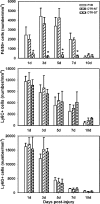

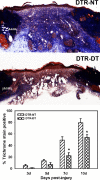
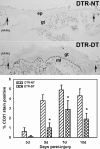
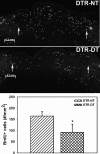
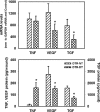
References
-
- Eming SA, Krieg T, Davidson JM. Inflammation in wound repair: molecular and cellular mechanisms. J Invest Dermatol. 2007;127:514–525 17299434. - PubMed
-
- Singer AJ, Clark RA. Cutaneous wound healing. N Engl J Med. 1999;341:738–746. - PubMed
-
- Martin P. Wound healing—aiming for perfect skin regeneration. Science. 1997;276:75–81. - PubMed
-
- Loots MA, Lamme EN, Zeegelaar J, Mekkes JR, Bos JD, Middelkoop E. Differences in cellular infiltrate and extracellular matrix of chronic diabetic and venous ulcers versus acute wounds. J Invest Dermatol. 1998;111:850–857. - PubMed
Publication types
MeSH terms
Substances
Grants and funding
LinkOut - more resources
Full Text Sources
Other Literature Sources
Molecular Biology Databases
Research Materials

